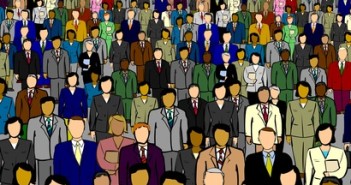When discussing the economic situation in any country, the official unemployment is the key number. In the US, the unemployment rate stands on 8.2% for a few months.
However, this number doesn’t tell the full story. The time that people are out of work has a long term impact on the economy.
The unemployment rate figure isn’t satisfying: the methods of calculating the unemployment rate vary between different countries and different periods of time. For example, using Spain’s previous methods, the unemployment rate is 30% and not 24%.
In the US, more and more attention is gradually given to the “real unemployment rate” (U-6), which also counts people who are too discouraged to search for a job. It currently stands on 14.9%. The participation rate is also gaining traction as an important measure, and so is the employment to population ratio, a figure that Ben Bernanke mentioned in the past.
A figure often overlooked is the duration of unemployment. When unemployment duration is longer, it has a severe long term impact, apart from the depressing situation for the person that is unemployed for so long:
- Skills are lost: Previous working skills are eroded, as they aren’t used. In addition, new skills are rarely acquired.
- Consumption falls: If at first, the person that is unemployed is still confident that he’ll find a job, and continues spending, he is forced to cut his expenses later on, so that the unemployment of this individual later impacts others, more than at the beginning.
- Savings are depleted: At first, unemployment benefits are some kind of substitute for a salary. When these expire, savings are tapped. Without long term savings, it is harder to buy an apartment.
The unemployment rate in the US was around 8% at the beginning of 2009. But just at the end of that year, unemployment depth became acute. As Mish shows, the percentage of those unemployed 27 weeks or more (at least half a year) rose above 25%. The only time that this happened since World War II was for a short period in 1983.
By the end of that year, that percentage rose above 40%, and never went below that level.
The average number of weeks unemployed stood on 38.2 weeks in June 2012. Yet again, the previous peak of around 22 weeks in 1983 was easily broken.
So, even if Europe will find a magic solution to its debt crisis, China will continue growing strongly and the world will generally exit the current slowdown, the depth of the US unemployment problem means that the economy will still struggle for years to come.
Further reading: US Still growing but not a Global Locomotive
